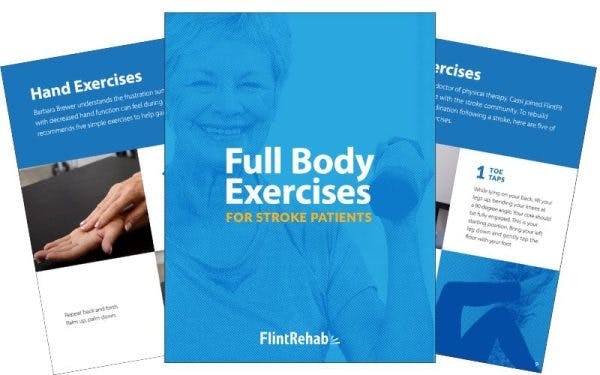When it comes to preventing strokes, you often hear about lifestyle factors like exercise, avoiding smoking, managing stress and anxiety. But did you know that your diet plays a huge role in stroke prevention? Enter the DASH diet (Dietary Approaches to Stop Hypertension), a scientifically proven eating plan that reduces stroke risk and promotes overall cardiovascular health.
In this guide, we’ll explore how the DASH diet can lower your chances of having a stroke, why it’s effective, and some practical tips for integrating it into your everyday life.
Let’s jump in!
What Is the DASH Diet?
Originally designed to combat high blood pressure (hypertension), the DASH diet emphasizes nutrient-rich foods while limiting sodium, sugars, and unhealthy fats. It encourages:
- Fruits and vegetables
- Whole grains
- Lean proteins (fish, poultry, legumes)
- Low-fat dairy products
- Nuts, seeds, and healthy fats (like avocado and olive oil)
Conversely, it restricts:
- Red meat
- High-fat dairy
- Sugary beverages and sweets
- Foods high in salt (sodium)
By adopting these eating habits, many individuals experience notable improvements in factors that are directly linked to stroke prevention, mainly lower blood pressure, healthier cholesterol levels, and better overall health.
How Does the DASH Diet Reduce Stroke Risk?
The DASH diet reduces stroke risk mainly by tackling some of the biggest risk factors for stroke head on. This includes helping manage blood pressure, cholesterol, blood sugar, and weight.
Let’s take a look at each of those and how the DASH diet can help!
Lowers Blood Pressure
High blood pressure is the leading modifiable risk factor for stroke, as it damages blood vessels over time and increases the likelihood of blockages or ruptures. The DASH diet effectively addresses this by emphasizing a reduction in sodium intake, which directly lowers blood pressure.
Additionally, DASH encourages eating foods rich in potassium (like bananas, spinach, and sweet potatoes), calcium (found in low-fat dairy products and leafy greens), and magnesium (abundant in nuts, seeds, and whole grains). These essential minerals help relax blood vessels and balance fluid levels, contributing to consistently healthier blood pressure levels. High levels of these nutrients have also been associated with better stroke recovery outcomes.
Improves Cholesterol Levels
Elevated LDL (bad cholesterol) levels cause plaque buildup inside arteries, narrowing the passages and increasing stroke risk. The DASH diet helps combat this by prioritizing foods containing healthy fats, like avocados, olive oil, nuts, and fatty fish. These foods improve cholesterol ratios by raising beneficial HDL cholesterol while lowering LDL cholesterol.
Additionally, the diet is rich in fiber from whole grains, fruits, and vegetables, which helps your body eliminate excess cholesterol. Together, these factors prevent plaque buildup, reduce inflammation, and support overall cardiovascular health.
Controls Blood Sugar
Persistently high blood sugar damages arteries and significantly raises stroke risk, especially for individuals with diabetes or prediabetes. The DASH diet addresses this by naturally limiting processed sugars and simple carbohydrates—foods that cause rapid spikes in blood glucose.
Instead, it promotes foods with low glycemic indices, such as whole grains, legumes, leafy greens, and berries. These choices digest more slowly, providing steady, sustained energy and preventing sudden blood sugar fluctuations.
Promotes Healthy Weight
Finally, excess body weight, particularly obesity, greatly increases stroke risk because it’s closely linked to high blood pressure, diabetes, and unhealthy cholesterol levels. The DASH diet helps with weight management by encouraging nutrient-dense yet calorie-conscious eating. The diet prioritizes fruits, vegetables, whole grains, and lean proteins, which are filling but lower in calories.
Furthermore, the high fiber content in DASH-approved foods promotes satiety, reducing hunger and preventing overeating. This supports gradual, healthy weight loss, lowering overall stroke risk and boosting long-term cardiovascular health.
Scientific Evidence Linking DASH and Stroke Prevention
Research consistently supports the DASH diet’s effectiveness. One landmark study published in Stroke found that individuals closely following the DASH diet experienced a significant reduction in stroke risk, decreasing the risk of ischemic stroke by as much as 14% compared to those who did not.
Another comprehensive review in Medicine concluded that adherence to DASH-style eating substantially reduces stroke risk. Finally, an article published in Stroke reports that the DASH diet or the similar Mediterranean diet promote the best dietary patterns to reduce the risk of stroke.
Getting Started with the DASH Diet: Practical Tips
Changing your eating habits might feel overwhelming at first, but don’t worry! It’s much easier when you take things step-by-step. Here are some simple, practical ways to start incorporating DASH diet principles into your daily meals and snacks.
Tip 1: Gradually Increase Fruits and Vegetables
Start by aiming for 4–5 servings of fruits and vegetables each day but don’t stress if you’re not there immediately. Begin slowly by adding a handful of berries to your breakfast or throwing an extra serving of veggies into your favorite dinner dish, like spinach in your pasta sauce or peppers in your omelet.
Colorful fruits and vegetables aren’t just tasty, they’re packed with nutrients and antioxidants that protect your heart and brain health.
Tip 2: Switch to Whole Grains
Swap out refined grains, like white bread, pasta, and rice, for whole-grain options. Whole grains—such as brown rice, quinoa, whole-wheat bread, or oatmeal—contain more fiber, keeping you feeling fuller longer while also supporting heart health and digestion.
An easy way to start is by simply replacing your usual sandwich bread or pasta with whole-grain alternatives a few times each week.
Tip 3: Choose Lean Proteins
Red meat can still fit into your meals occasionally, but try to limit it to just once or twice per week. Instead, prioritize lean proteins like chicken, turkey, beans, lentils, and fish. Fish like salmon and tuna aren’t just delicious, they’re rich in omega-3 fatty acids, powerful nutrients that help reduce inflammation and protect your cardiovascular system.
Not sure where to start? Try making a tasty lentil stew or grilled salmon seasoned with fresh herbs.
Tip 4: Monitor Sodium Intake
Cutting back on salt doesn’t mean your meals have to become boring! Experiment with flavorful herbs, spices, garlic, and lemon juice to boost taste without adding extra sodium. Try making your own salad dressings, marinades, or spice mixes at home to easily control how much salt you’re eating.
If you’re worried about flavor, remember your taste buds will naturally adapt to less salt after just a few weeks.
Tip 5: Healthy Snacking
Ditch heavily processed snacks and keep a stash of tasty and nutritious alternatives nearby. Nuts like almonds and walnuts, seeds like pumpkin or sunflower, and fresh fruits are perfect choices—they’re satisfying, portable, and loaded with healthy fats and vitamins. Just remember to consider the serving size—nutrient-rich foods like nuts have many health benefits, but are also high in calories. Sticking with a small handful is generally advised.
For something sweet, pair apple slices with almond butter or sprinkle berries on top of yogurt for a satisfying midday snack that supports your health.
Tip 6: Stay Hydrated the Right Way
Hydration plays a crucial role in heart and brain health, but sugary drinks can quickly undo your dietary efforts. Make water your primary beverage throughout the day, and if plain water feels boring, give it a fun twist by infusing it with slices of cucumber, lemon, berries, or fresh mint leaves. Herbal teas, like peppermint or chamomile, are also great low-calorie, flavorful alternatives.
Keeping properly hydrated boosts your energy, supports healthy digestion, and helps maintain steady blood pressure levels.
Tip 7: Plan Ahead for Success
A little preparation goes a long way toward making the DASH diet easier and more sustainable. Set aside time each week to plan meals, create a shopping list, and even prep ingredients in advance—like washing and chopping vegetables, cooking batches of whole grains, or marinating lean proteins.
Having nutritious, DASH-friendly options ready to go will make healthy eating more convenient, help you resist less-healthy temptations, and keep you on track to reach your stroke prevention goals.
Supplementing DASH with Lifestyle Changes
While adopting the DASH diet is a powerful first step toward stroke prevention, combining it with other healthy habits can multiply the benefits. Think of DASH as the foundation of your stroke-prevention plan, and lifestyle adjustments as the essential building blocks that strengthen your overall health.
Here are some key lifestyle changes to complement your DASH diet journey:
- Regular Exercise: Aim for about 150 minutes of moderate physical activity each week. This could be brisk walking, swimming, biking, or anything you genuinely enjoy. Regular exercise strengthens your cardiovascular system, helps control blood pressure, and enhances cognitive health.
- Quit Smoking: Smoking dramatically increases the likelihood of stroke by damaging arteries and reducing oxygen flow to your brain. Quitting smoking isn’t easy, but even reducing cigarette intake can significantly lower stroke risk. Seek support from friends, family, or healthcare providers, and consider helpful cessation programs or tools.
- Manage Stress: Chronic stress isn’t just tough on your mind, it takes a toll on your heart health as well. Practicing relaxation techniques like mindfulness, meditation, deep breathing exercises, or yoga can reduce stress hormones, lower blood pressure, and make your DASH diet more effective. Even dedicating a few minutes a day to stress management can make a noticeable difference in your long-term health.
Avoiding certain foods after a stroke is another important piece of maintaining a healthy diet.
Final Thoughts: Getting Started with the DASH Diet Today
The DASH diet offers more than just stroke prevention, it’s a realistic, science-based roadmap to better overall health. By incorporating gradual dietary changes, boosting your intake of nutritious foods, and pairing your new habits with regular exercise and stress management, you’re setting yourself up for long-term success.
Remember, you don’t have to overhaul your entire lifestyle overnight. Small, consistent improvements lead to meaningful results over time. So why wait? Take that first step today and enjoy the benefits of better heart and brain health for years to come.
We hope this guide helps you get started!









